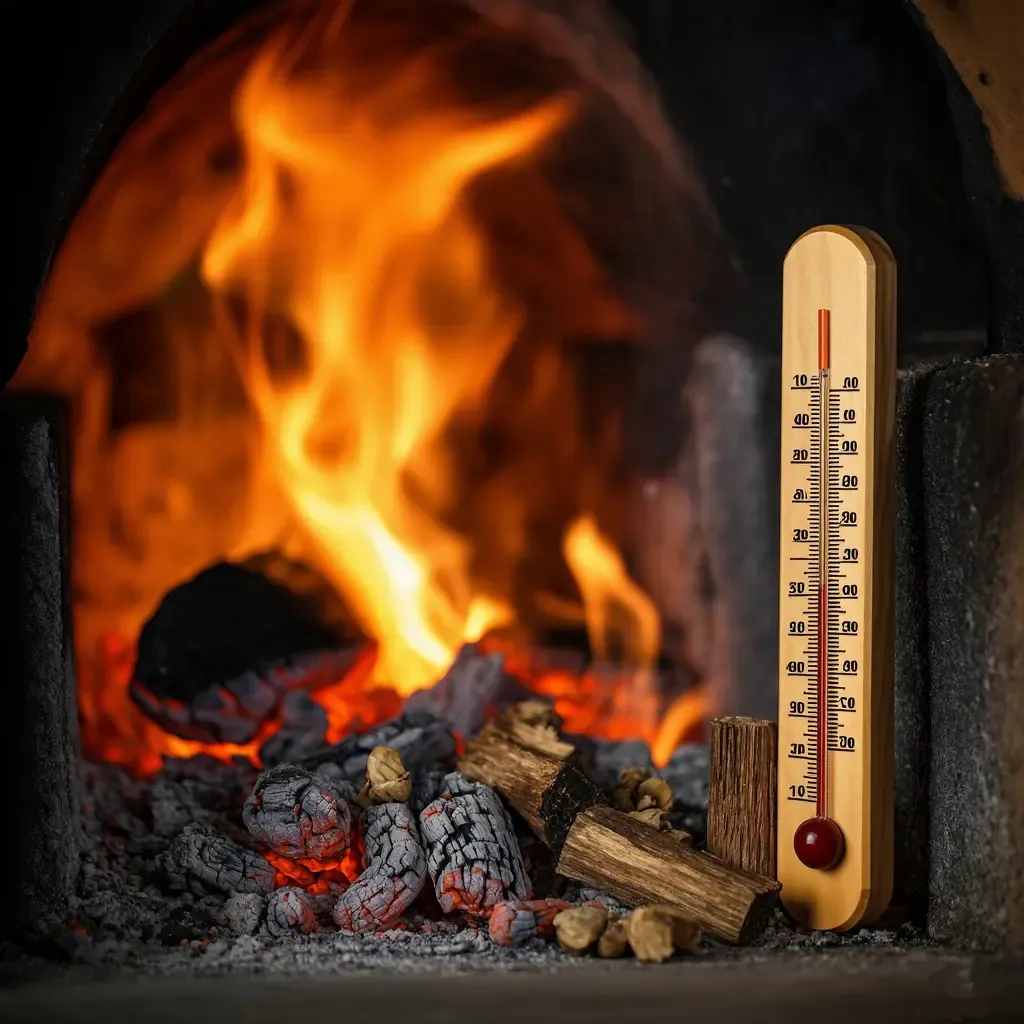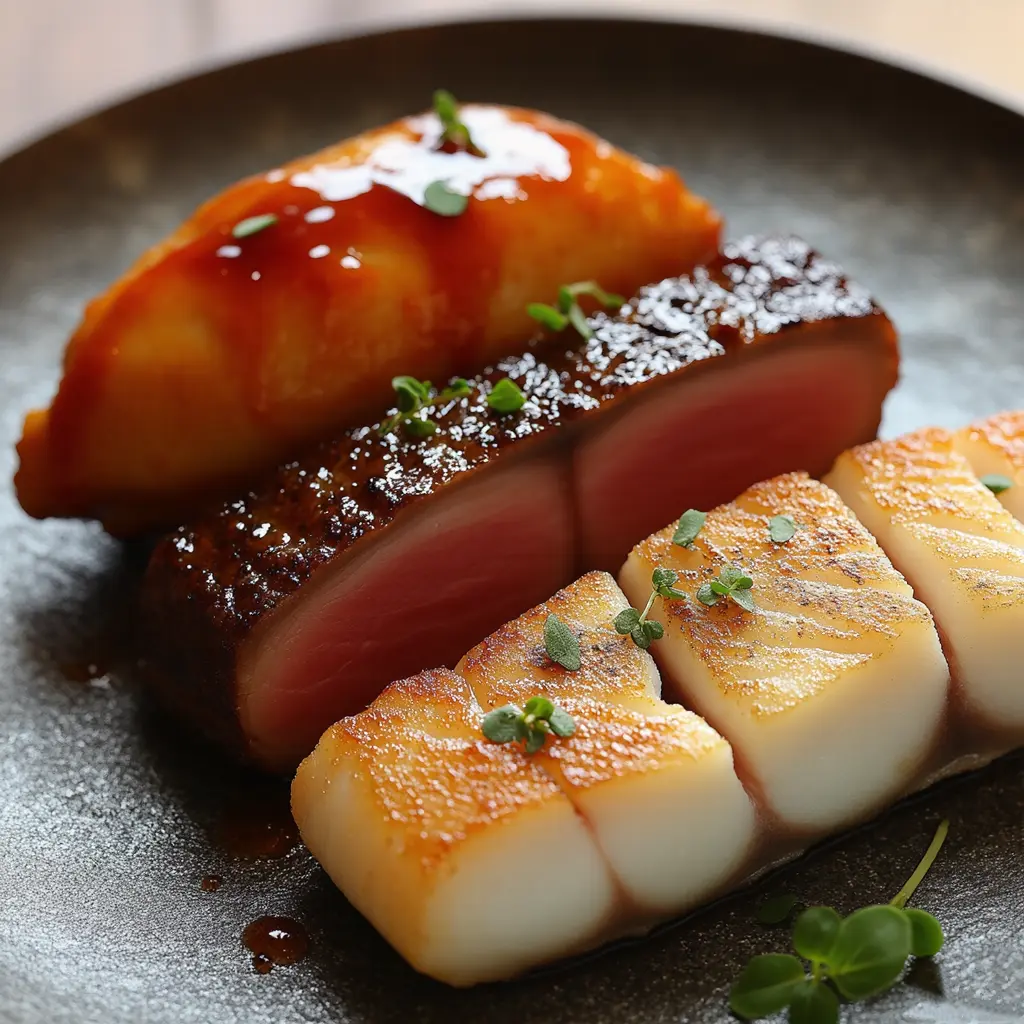Ready to elevate your outdoor cooking skills? Smoker recipes are more than just throwing meat on a grill—they’re an art form that combines patience, technique, and flavor. Did you know that using high-quality ingredients and mastering fire management can transform even novice cooks into pitmasters? Whether you’re smoking ribs, salmon, or brisket, this guide will walk you through six methods to help you achieve restaurant-quality results right in your backyard. Let’s dive in!
Table of Contents
Choosing the Right Cut of Meat for Your Smoker Recipes
When it comes to smoker recipes, picking the right cut of meat is like choosing the foundation for your dream house—it’s crucial! I remember my first attempt at smoking beef. I grabbed whatever was on sale—flank steak—and threw it in the smoker. Big mistake. It turned out dry and tough as leather. Lesson learned: not all cuts are created equal .
1. Why Marbling Matters
You want a cut with good marbling because that fat melts during the long cooking process, keeping the meat juicy and adding tons of flavor. Think about brisket, which is often called the “king of BBQ.” Its high fat content makes it perfect for low-and-slow smoking .
2. Popular Cuts for Smoking
Here’s a quick rundown of some top picks:
- Brisket : A classic choice that gets better with time. Just don’t skip scoring the fat cap—it helps render the fat evenly .
- Chuck Roast : Don’t overlook this budget-friendly option. It’s packed with flavor and becomes super tender after hours in the smoker .
- Beef Ribs : If you’re craving something indulgent, these babies deliver big taste with their rich, fatty texture .
3. Tips from My Mistakes
One time, I tried smoking lean sirloin without understanding how important fat really is. Rookie move. Now, I always check for marbling before buying. And if you’re unsure, ask your butcher—they’re usually happy to help point you toward the best cuts for smoking .
Remember, even the fanciest smoker won’t save poor-quality meat. Spend a little extra on the right cut, and trust me, your guests will thank you later!
Master Fire Management Techniques for Your Smoker Recipes
Alright, let’s talk about the heart of smoking—fire management. This is where things get serious because if you don’t master this part, even the best cut of meat won’t save your dish. I’ll never forget my first attempt at low-and-slow cooking; I thought keeping the fire blazing hot would speed up the process. Boy, was I wrong! The result? A charred mess that sent me back to the drawing board .

1. Understanding Low-and-Slow Cooking
Low-and-slow is more than just a phrase—it’s a philosophy. You need patience and precision when managing heat in your smoker. For most recipes, aim for temperatures between 225°F and 275°F. This range ensures the meat cooks evenly without burning on the outside while staying juicy inside .
2. Controlling Charcoal, Gas, or Pellet Smokers
Each type of smoker has its quirks, so it pays to know how they work. With charcoal smokers, adding unlit coals gradually helps maintain steady heat. Gas smokers are easier but can lack flavor depth unless you use wood chips. Pellet grills offer convenience with built-in temperature controls, though sometimes they can be finicky .
3. Lessons Learned from Trial and Error
I once tried using too much wood during a smoke session, thinking more smoke meant better flavor. Wrong again! Too much smoke can make your food taste bitter. Now, I stick to a general rule: add wood chunks every hour or two, depending on the recipe .
4. Maintaining Consistent Heat
One of the biggest challenges is keeping the heat consistent, especially if you’re dealing with fluctuating weather conditions. Invest in a good thermometer—both for the smoker and the meat—and check them regularly. If the temp drops, adjust the vents or add fuel as needed. Trust me, this step will save you countless headaches .
Fire management isn’t rocket science, but it does take practice. Stick with it, and soon enough, you’ll have restaurant-quality results right in your backyard!
Experiment with Flavorful Rubs and Marinades for Your Smoker Recipes
Let me tell you, there’s nothing quite like the magic that happens when you combine the right rub or marinade with a perfectly smoked piece of meat. Over the years, I’ve experimented with countless combinations, some of which turned out amazing, while others… well, let’s just say they were learning experiences .
1. Creating Signature Rubs
A good dry rub is your secret weapon in the world of smoking. One of my all-time favorites includes dark brown sugar, smoked paprika, coarse salt, ground black pepper, and cayenne for a little kick . For beef, robust spices like cocoa powder, chili powder, and garlic really shine, giving the meat a deep, complex flavor. so don’t shy away from adding cinnamon or even a touch of honey to your mix .
2. Wet vs. Dry: Which Should You Choose?
Now, here’s where it gets interesting—wet marinades versus dry rubs. Both methods have their own role, yet they fulfill distinct functions. A wet marinade penetrates deeper into the meat, especially if it contains an acid like lemon juice or vinegar, which helps tenderize tougher cuts . On the flip side, a dry rub forms a delicious crust during cooking, sealing in juices and creating that irresistible bark smokers dream about .
3. Avoiding Common Mistakes
I once made the rookie mistake of marinating chicken in something way too acidic, thinking more was better. Big nope! Acidic marinades can actually “cook” the surface of the meat, making it tough instead of tender . Now, I always balance acids with oils and herbs to keep things flavorful yet gentle on the proteins.
4. Try This Simple Marinade Recipe
For those looking for a quick win, try this easy Italian-inspired marinade: chop fresh parsley, mince a couple of garlic cloves, squeeze in some lemon juice, sprinkle grated Parmesan, and finish with olive oil. Toss it with steak before smoking, and voilà—you’ve got yourself a restaurant-quality dish without leaving home .
Flavor experimentation doesn’t stop at traditional recipes. Feel free to explore international options, like Korean kalbi marinades for short ribs, or spicy Caribbean jerk blends for chicken. Just remember, practice makes perfect, and every batch brings you closer to finding your signature style .
Try These Top-Selling Smoker Recipes
Alright, let’s dive into some of the most popular and top-selling smoker recipes that are sure to impress your friends and family. Whether you’re hosting a backyard BBQ or just craving something delicious, these dishes will leave everyone wanting seconds .

1. Smoked Mac and Cheese
Who doesn’t love creamy, cheesy goodness with a smoky twist? This recipe uses the indirect heat of your smoker to create a rich, golden crust on top while keeping the inside gooey and decadent. Pair it with smoked chicken or ribs for an unforgettable meal .
2. Honey-Glazed Smoked Chicken
This one is a crowd-pleaser! Marinate chicken pieces in a mix of honey, soy sauce, garlic, and spices overnight. After smoking at 225°F for about 3 hours, brush on more glaze during the last 15 minutes for a sticky, caramelized finish. It’s sweet, savory, and irresistibly tender .
3. Smoked Brisket
If you’re ready to take on a challenge, brisket is the king of smoker recipes. Start with a high-quality cut, season generously with a simple salt-pepper-cayenne rub, and smoke low-and-slow (around 225°F) for 12–14 hours. Don’t forget to wrap it in butcher paper after a few hours to keep it juicy .
4. Smoked Chilean Sea Bass
For seafood lovers, this dish brings elegance to the table. Season sea bass fillets with lemon zest, dill, and a light dusting of smoked paprika before placing them on the smoker for about 20–30 minutes at 250°F. The result? Flaky, buttery fish with a hint of smoke .
These recipes range from quick and easy to more advanced techniques, ensuring there’s something for every skill level. So grab your smoker, fire it up, and get ready to enjoy some truly mouthwatering results!
Optimize Your Smoker Setup for Efficiency
If you’re looking to get the most out of your smoker, optimizing its setup is key. Think about it like building a house; if the foundation isn’t solid, everything else falls apart . Here’s how you can tweak your smoker for better performance and efficiency.
1. Choosing the Right Fuel
First things first: fuel choice matters. While wood might seem traditional, charcoal often provides more consistent heat and easier management in many smokers, particularly offset designs . Using lump charcoal instead of briquettes can also improve airflow and temperature control, leading to a cleaner burn with less ash buildup.
2. Two-Zone Fire Management
Setting up a two-zone system—where one side holds the fire while the other remains cooler—is crucial for maintaining steady temperatures without over-smoking your food . This method allows you to move foods between zones depending on whether they need direct heat or indirect smoke, enhancing both flavor development and cooking precision.
3. Airflow Adjustments
Proper airflow ensures even heating throughout the chamber. Make sure vents are adjusted correctly; too much air leads to excessive burning which wastes fuel, whereas insufficient ventilation stifles combustion . A good rule of thumb? Start by opening all dampers fully when lighting the fire, then gradually close them once desired temps stabilize.
4. Regular Maintenance
Don’t underestimate regular cleaning and maintenance as part of optimization efforts. Over time, grease deposits and carbon residues can clog vent holes or interfere with heat distribution inside the unit . Cleaning these areas regularly not only prolongs lifespan but also keeps operations running smoothly.
By focusing on these aspects—fuel selection, zoning strategies, airflow adjustments, and upkeep—you’ll find yourself well-equipped to handle whatever smoking challenge comes next! Remember, small changes add up significantly towards achieving that perfect balance between taste & efficiency we all strive for in our culinary adventures.
Serve It Up with Style
Now that you’ve mastered the art of smoking and prepared some incredible dishes, it’s time to think about presentation. Serving your smoker recipes with style isn’t just about making them look good—it enhances the overall dining experience. Let me share a few tips I’ve picked up over the years .

1. Presentation Matters
A well-presented dish can truly transform the dining experience. For instance, arranging smoked ribs in a crosshatch pattern or fanning out brisket slices creates an eye-catching focal point on any plate. These small details elevate your meal from casual to memorable .
2. Pairing Sides for Texture and Flavor
Don’t forget about the sides! They play a crucial role in balancing flavors and textures. Go for something creamy like mac and cheese or opt for a refreshing crunch with coleslaw or pickles . A mix of both adds depth to your spread.
3. Garnishes and Final Touches
Adding fresh herbs, a drizzle of sauce, or even a sprinkle of spices before serving ties everything together. For example, a pinch of parsley or cilantro not only looks great but also complements many smoked meats .
4. Setting the Scene
Presentation doesn’t stop at the food itself. Consider how you present the entire meal. Use rustic wooden boards for appetizers or stack plates creatively to add height and interest. Don’t be afraid to experiment—sometimes imperfection is what makes it perfect .
Serving your smoker recipes with style takes practice, but once you get the hang of it, you’ll find yourself creating meals that are as visually stunning as they are delicious. So go ahead, impress your guests, and enjoy the process!
Conclusion
Smoker recipes don’t have to be intimidating. By following these six methods—from selecting premium meats to optimizing your smoker setup—you can create dishes that rival those from professional kitchens. Remember, practice makes perfect, so keep experimenting with new flavors and techniques. Happy smoking! Don’t forget to share your creations with us in the comments below or tag us on social media for a chance to be featured.
FAQs
1: What type of smoker is best for beginners?
For beginners, pellet smokers are often recommended due to their ease of use and consistent temperature control .
2: How long does it take to smoke a whole turkey?
Smoking a whole turkey typically takes about 30 minutes per pound at a temperature of 225°F–250°F .
3: Can I smoke vegetables in my smoker?
Absolutely! Vegetables like bell peppers, zucchini, and Brussels sprouts add a delicious smoky flavor when smoked .
4: Is it necessary to brine meat before smoking?
While not mandatory, brining helps retain moisture and enhances flavor, especially for leaner cuts like chicken and turkey .
5: How do I prevent my food from drying out during smoking?
Use a water pan in your smoker to maintain humidity, wrap larger cuts in foil after several hours, and baste periodically with sauce or oil .

